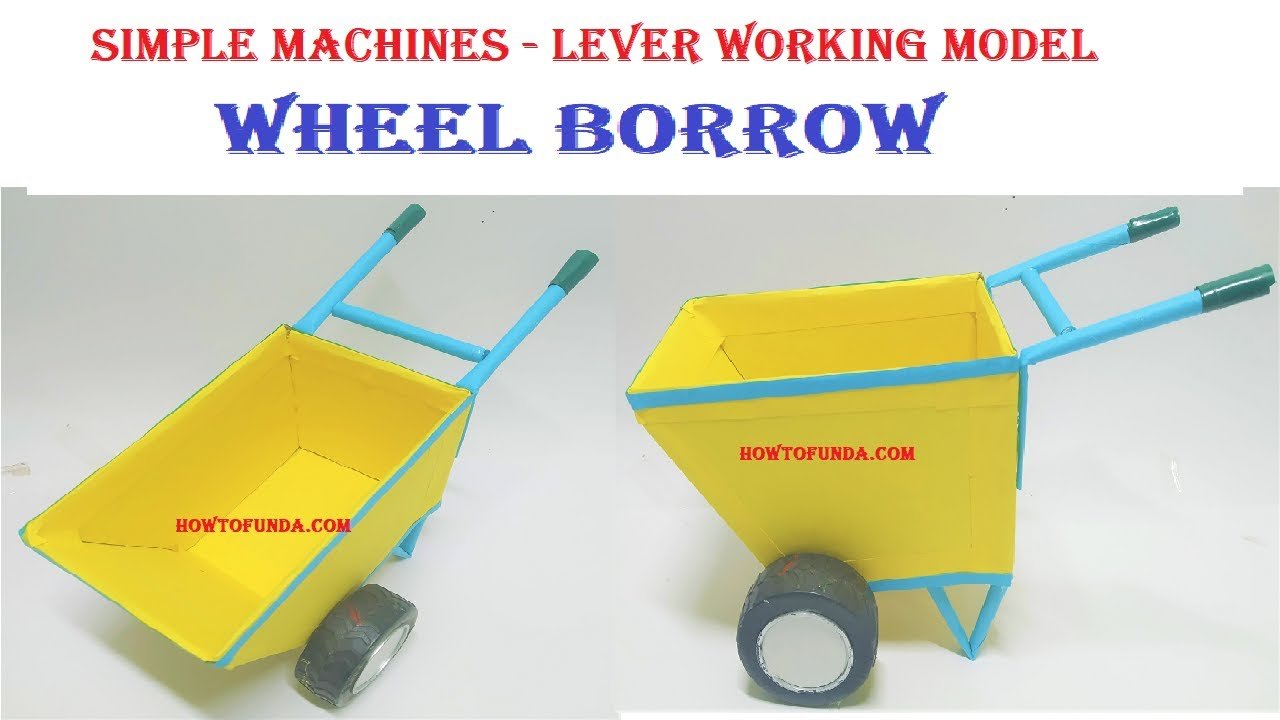Introduction to Wheelbarrow Physics:
Wheelbarrows are handy tools that have been used for centuries to transport heavy loads with less effort.
Understanding the physics behind a wheelbarrow can give you insights into how this simple invention makes tasks like gardening and construction much easier.
Let’s explore the physics of a wheelbarrow in simpler terms:
Understanding the Wheelbarrow:
- Basic Design:
- A wheelbarrow consists of a tray or bed for holding the load, one or two handles for lifting, and a wheel at the front. The wheelbarrow is designed to pivot around its wheel, making it easy to move and balance.
- Center of Mass:
- The center of mass is the point where the entire weight of the wheelbarrow is concentrated. In a well-designed wheelbarrow, the center of mass is close to the wheel.
- Fulcrum and Lever Action:
- The wheel acts as a fulcrum (pivot point), and the handles act as levers. When you lift the handles (effort), the wheelbarrow tilts around the wheel, making it easier to lift and move heavy loads.
Physics in Action:
- Mechanical Advantage:
- A wheelbarrow provides a mechanical advantage by allowing you to lift a heavy load with less effort. The long handles and the wheel act as levers, distributing the force and making the load feel lighter.
- Balancing Act:
- The design of the wheelbarrow allows you to balance the load on the wheel, preventing the entire weight from pressing down on you. This balance makes it easier to maneuver the wheelbarrow without straining yourself.
- Distance and Force:
- By lifting the handles and tilting the wheelbarrow, you increase the distance over which the force is applied. This longer lever arm reduces the amount of force needed to lift the load.
Real-Life Applications:
- Gardening:
- In gardening, a wheelbarrow is incredibly useful for moving soil, plants, or heavy bags of fertilizer from one place to another. The mechanical advantage makes it less physically demanding for the gardener.
- Construction:
- In construction, wheelbarrows are used to transport bricks, concrete, and other building materials. The design allows construction workers to move heavy loads across uneven terrain with relative ease.
- Cleaning and Moving:
- Wheelbarrows are handy for cleaning up yard waste or moving items around the home. The physics of the wheelbarrow make it a versatile tool for various tasks.
Why Wheelbarrows Matter:
- Efficiency:
- Wheelbarrows make tasks more efficient by reducing the effort needed to lift and transport heavy loads.
- Versatility:
- The design of the wheelbarrow makes it a versatile tool for various applications, from gardening to construction.
- Physics Understanding:
- Learning about the physics of a wheelbarrow introduces concepts like levers, balance, and mechanical advantage in a practical context.
Building a wheelbarrow lever working model for a simple machines project can be an interesting and educational project.

Here’s a step-by-step guide to help you create a simple and effective wheelbarrow lever model:
Materials Needed:
- Wooden board or plywood (for the base)
- Wooden dowels or sturdy sticks
- Strong metal rod or thick wooden dowel (for the lever)
- Wheel (small bicycle wheel or any small wheel)
- Nuts and bolts
- Drill
- Saw
- Measuring tape or ruler
- Pencil
- String or rope
- Small bucket or container
- Hot glue gun or wood glue
Video Step by Step Procedure wheelbarrow working model:
1. Prepare the Base:
- Cut a rectangular piece of wood to serve as the base of your wheelbarrow. This will be the platform on which the lever system is mounted.
2. Assemble the Wheel:
- Attach the wheel to one end of the base. Use nuts and bolts to secure it in place. This will be the wheelbarrow’s wheel.
3. Create the Lever:
- Cut a sturdy metal rod or thick wooden dowel to serve as the lever. The length should be such that it extends from the base to the wheel’s axle when attached.
4. Mount the Lever:
- Attach one end of the lever to the base, ensuring that it can pivot freely. You can use a bolt as the pivot point and secure it tightly.
5. Attach the Bucket Holder:
- Attach a small bucket or container to the other end of the lever. Use string or rope to secure it in place, creating a place for carrying items.
6. Test the Lever System:
- Test the lever system by placing a small load in the bucket. Lift the bucket and observe how the lever system works, making the wheelbarrow move.
7. Enhance Stability (Optional):
- To enhance stability, add support struts or braces to reinforce the lever and prevent wobbling.
8. Decorate (Optional):
- Decorate your wheelbarrow lever model to make it visually appealing. You can paint it or add creative elements.
9. Discuss the Principles:
- Explain to observers that the wheelbarrow lever is a simple machine that utilizes the principle of leverage to make lifting and transporting loads easier.
10. Experiment with Load Capacity: – Experiment with different loads to observe how the lever system handles varying weights. Discuss the concept of mechanical advantage.
Conclusion:
Wheelbarrows are a brilliant example of how simple machines and basic physics principles can make our lives easier.
By understanding the mechanics behind a wheelbarrow, we can appreciate how this centuries-old invention continues to play a crucial role in various aspects of our daily tasks and activities.

